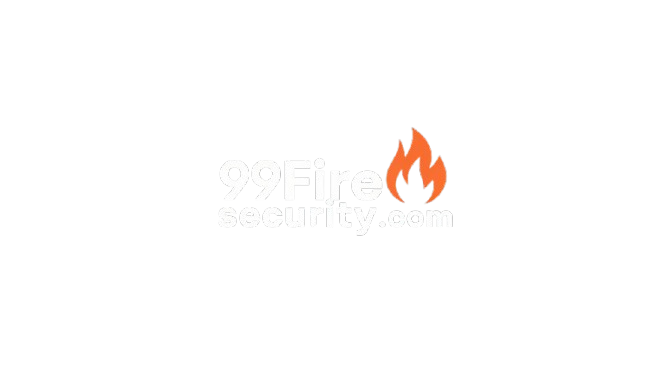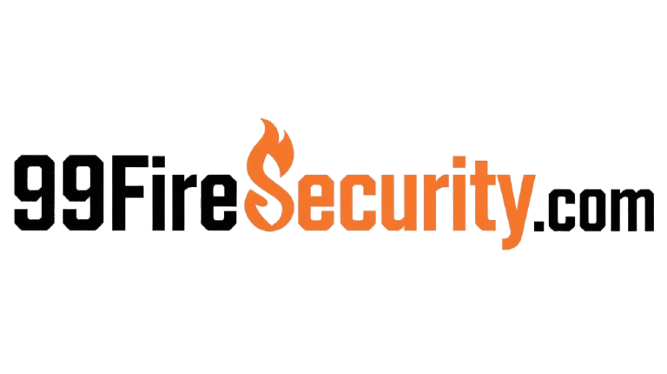Introduction
Fire hazards in the workplace can endanger the employees, assets, and even your whole business. The fire can lose control and affect a great harm and even fatality if not configured properly. That is why it is important for employers and employees to be proactive in identifying fire hazards and removing them from the workplace. This helps make it a safer place for all.
In this article, we are going to take a look at how to identify common fire hazards in the workplace, the measures you can take to eliminate them, and preventive measures to set up to minimize Fire Hazards risks.
1. A Guide to Common Fire Hazards in the Workplace

Before you can extinguish fire hazards, you need to know what they are. There are different ways that fire can occur in the workplace. The following are some common fire hazards:
1.1 Electrical Hazards
One of the leading causes of Fire Hazards in the workplace is electrical issues. Overloaded circuits, faulty wiring, and defective equipment are all conditions that can create sparks or overheating, subjects that can easily ignite a Fire Hazards.
How to recognize electrical hazards:
- Test for frayed wires or cables.
- Check electrical outlets for fraying or overheating.
- Check for damaged or exposed electrical equipment.
- Make sure power strips are not overloaded.
1.2 Flammable Materials and Chemicals
Most workplaces contain stored or used flammable materials, for example, paper, solvent, chemicals or cleaning products. If not properly stored, these types of materials can combust rapidly when coming into contact with heat or sparks.
How to recognize flammable hazards:
- Look at storage areas for chemicals, solvents, or flammable materials.
- Check for improperly labeled or unsealed containers.
- Make sure flammable materials are not located too close heat sources, flame or electrical equipment.
1.3 Insufficient Fire Protection Equipment
Installing equipment such as foam extinguishers, smoke detectors, sprinklers systems and others is the only option available in preventing a potential fire from spreading. When such systems are nonexistent or outdated, it poses a higher risk of a fire spiraling out of control.
How To Spot Hazards With Fire Protection Equipment
- Keep fire extinguishers and ensure they are well maintained
- Make sure smoke detectors and Fire Hazards alarms are up and running.
- Check sprinklers and emergency exits to ensure that they are accessible and working.
1.4 Escape routes that are blocked or obstructed
In case of a fire, it is essential that staff have a way to get out of the building efficiently and safely. Escape routes that are blocked or obstructed can delay escape and increase the chance of injury or death.
How to recognize the hazards of escape route:
- Ensure all emergency exits are clear and accessible at all times.
- Use stairwells, hallways and doorways to check for anything that might block an evacuation.
- Make sure exit signs are visible and illuminated.
1.5 Faulty Heating Equipment
Space heaters or boilers can also be fire hazards when they are left unattended or not maintained. Overheating, or malfunctioning, of equipment can easily cause such sparks and fire outbreaks.
How to recognize hazards of heating equipment:
- Check space heaters and other heating devices to ensure they’re working properly.
- Keep heating equipment [at least three feet] away from flammable materials.
- Book regular maintenance with heating systems to make sure that they are in a good condition.
2. Make Fire Hazards Disappear at Work

After identifying workplace fire hazards, it’s time to act to remove them. Here are steps to help cut the risk of a fire
2.1 Keep Up Electrical System Maintenance
Electrical safety covers not only the physical components of the electrical system such as wires, switches, outlets, cables, and circuit breakers, but also the human operation of the electrical system such as turning on lights, connecting appliances, and unplugging cords.
- Have a skilled electrician inspect the wiring and outlets.
- This is why you should use certified electrical equipment.
- Never exceed the ratings of the circuit or power strip. Never use an extension cord with multiple devices plugged into one outlet.
- Replace any old or damaged wiring immediately to avoid overheating.
2.2 Always store flammable materials properly
Proper storage of combustible materials remains one of the best methods to remove fire hazards in the workplace.
- Chemicals and flammable materials should be stored in fireproof cabinets or storage containers.
- Do not store flammable materials near heat sources, electrical equipment or open flames.
- All chemicals should be labeled with approximate hazard warning.
- Avoid the build-up of flammable vapors by ensuring that storage areas are well ventilated
2.3 Fire Protection Equipment
Fire Hazards protection equipment helps to manage and extinguish a fire before it becomes out of control. Equip your workplace adequately with usable fire safety supplies.
In stations of the workplace where there is a fire hazard, having Fire Hazards extinguishers within reach will make the difference between life and death.
- Regularly inspect your fire extinguishers to check that they are fully charged and functional.
- The building should have smoke detectors and fire alarms that will notify employees in the event of a fire.
- Maintain sprinkler systems so that they are functioning and code-compliant.
2.4 Keep Escape Routes Clear
It’s important to keep escape routes clear so that workers can exit the building quickly in case of a fire.
- Check and clear exit paths regularly to make sure no items are blocking them.
- Ensure the exit signs are visible and illuminated to guide employees to safety.
- Do not ever block fire doors or emergency exits with furniture, equipment or anything else.
- Add emergency lighting to ensure visibility if the power goes out during a Fire Hazards.
2.5 Regularly Inspect Heating Equipment
Tip: Schedule regular inspections and maintenance for heating equipment.
- Have your heating systems professionally inspected so you can be sure they’re operating properly.
- Do not leave space heaters unattended; make sure they are turned off when not in use.
- Keep combustible materials at least 3 feet away from heating equipment, including papers, clothing and furniture.
- Update, repair and service boiler and HVAC systems to ensure safe operation.
Things that you can do to prevent the fire risks

You can also take steps to prevent the risk of fire in the workplace by identifying and eliminating fire hazards.
Have A Fire Safety Plan
Fire Safety Plan Having a fire safety plan is crucial for helping employees navigate fire emergencies. The plan should include clear procedures for evacuations, Fire Hazards drills, and communication during a Fire Hazards.
- Have an emergency response plan in which specific people have specific roles and know evacuation routes.
- Perform fire drills regularly to get employees used to the evacuation plan.
- Have a list of emergency contacts (fire department, first responders) easily accessible.
Train Employees on Fire Safety
Teach Your Employees about the Fire Risks and Fire safety measures: An educated employee can significantly minimize the chances of accidental fires.
- In the event of a fire emergency, all staff need to receive fire safety training that includes prevention and evacuation procedures as well as utilizing fire extinguishers.
- Election of new members of the board director (it’s possible this has already been completed).
- Encourage employees to report possible fire hazards, including damaged electrical equipment or obstructed exits.
Go Over Fire Safety Regulations
What are the Fire Safety Regulations in Your Workplace?

- Acquaint yourself with Fire Hazards codes and regulations in your area, and verify workplace compliance.
- Fire Risk Assessment — Contact Fire Hazards safety experts to examine your workplace for possible causes of fires.
- Work on implementing the recommendations from Fire Hazards safety audits to enhance safety.
Conclusion
Knowing fire hazards in the workplace and how to avoid them is an essential part of protecting not only your employees, but also your property and your business. Eradication of some easy tasks such as these show a decrease in fire hazard and aids your overall security; checking electrical units, saving flammable matter appropriately and good maintenance of Fire Hazards protection units and exit route.
FAQs
- Is there a fire hazard at work, what should I do?
Immediately report the hazard to your supervisor or safety officer. If you are not adequately trained, do not attempt to correct the hazard yourself. - How frequently do you need to carryout fire safety inspections?
Fire safety inspection should be regularly scheduled at least once every 6 months if not more often to determine what fires and/or explosions can occur in your place of work. - Is it possible to completely get rid of fire hazards?
Some fire risks can never be fully removed but common hazards can be addressed and the following the recommended safety practices can greatly reduce the probability of a fire. - What training do I need to provide on fire safety to employees?
Provide fire safety awareness training, display posters in common areas and distribute accessible documents of fire safety procedures so workers understand the risks they face and how to react in the event of an emergency. - Is a fire extinguisher necessary in all work spaces?
Yes, workplace law requires fire extinguishers in all workplaces. They must be accessible and suitable for the type of fire hazards present.


